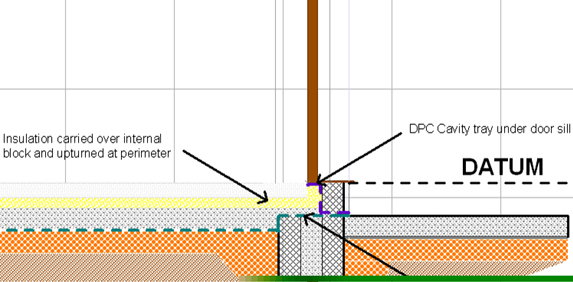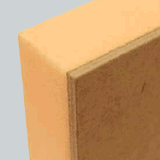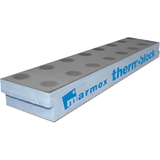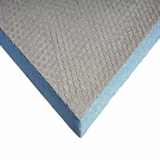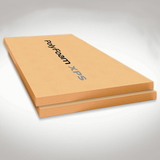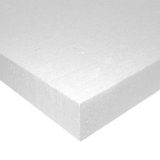- Blogs
- Perimeter Insulation Upstand
Perimeter Insulation Upstand

A perimeter insulation upstand is a great way to prevent water from seeping into the building structure and save energy. In addition, it helps prevent the screed from cracking. There are several things to remember when installing a perimeter insulation upstand. These include choosing the correct type, choosing the right size, and choosing the right installation method. This article covers the basics of perimeter insulation upstand and will show you how to specify and install one.
What is Perimeter Upstand Insulation? ![]()
Gaps or spaces in insulation, especially at junctions between the wall and roof or wall and floor, lead to thermal bridging or cold bridging. It is the most vulnerable area that allows heat to escape, accounting for nearly 34% of heat loss in a building envelope.
When installing insulation on a concrete floor, it is important to install a vertical strip of insulation along the perimeter of the room. This type of insulation is commonly known as an upstand insulation
Therefore, insulating the perimeter with upstand insulation creates a thermal envelope for a building. The purpose is to avoid cold bridging near the floor's edge where it connects with the wall. The insulation effectively prevents heat from escaping through the edges of the floor, particularly where it meets the wall's screed or concrete.
What Insulation Materials Can be Used For Perimeter Upstand Insulation?
Perimeter upstand insulation in the UK is typically made of materials that have high insulation values and are resistant to moisture, such as rigid foam insulation boards made from materials such as expanded polystyrene (EPS), extruded polystyrene (XPS), polyisocyanurate (PIR), or mineral wool.
AIM Upstand Boards, for example, are manufactured using a variety of insulation materials. These include leading brands of stone wool insulation or extruded polystyrene foam and is bonded to fibre cement facing boards. They are highly impact resistant and offer a robust finish. They also come pre-cut to specific heights.
Choosing a suitable product
Choosing a suitable perimeter insulation upstand is crucial to reducing the amount of heat loss through thermal bridging in your building. The upstand is a layer of insulation that is usually 25mm thick and installed between the edge of the concrete floor slab and the inner wall. It can be used to reduce the U-value of the floor and wall. Plus, it also contributes to lower psi values of the junction(measures heat loss between thermal elements at the junction).
Choosing a suitable upstand insulation is critical to achieving compliance with building regulations. Without one, rooms can become overheated and uneven in temperature. In addition, it could be a non-compliance issue. It’s therefore important to choose a suitable upstand and to check the height of your upstand against the main roof level.
Choosing a suitable perimeter insulation upstand is crucial to achieving a high thermal performance. The thickness of an upstand must be equal to the thickness of the screed, but it should not exceed the thickness of skirting or wall plaster. If the upstand exceeds these dimensions, you will be prone to thermal bridging.
Specifying and installing perimeter insulation upstand
 Perimeter insulation upstands can be installed to reduce the thermal bridge between a floor and a wall. They should be a minimum of 20 mm thick and overlap the floor and wall insulation by 150 mm. When installed correctly, they should fit tightly and prevent cold bridging.
Perimeter insulation upstands can be installed to reduce the thermal bridge between a floor and a wall. They should be a minimum of 20 mm thick and overlap the floor and wall insulation by 150 mm. When installed correctly, they should fit tightly and prevent cold bridging.
Upstand insulation is an important part of insulating concrete floors. It should be installed vertically around the floor perimeter and should be installed so that it is level with the top of the floor screed. When installing upstands, the top of the upstand should sit level with the top of the floor insulation. It should also be butted up to the bottom of the insulation.
A perimeter upstand is essential to minimise thermal bridging. The best way to do this is to ensure that the cavity wall insulation extends beyond the floor insulation by at least 150mm. This helps minimise thermal bridging, which can cause the insulation to fail. Additionally, the upstand is important if you are installing an underfloor heating system.
Buy Perimeter Upstand Insulation now
Problems with poor installation
Problems with poor perimeter insulation installation can lead to poor occupant comfort and energy efficiency. The installation process can be difficult and complicated, and many architects and engineers are struggling to develop simpler methods. There are a few key areas to watch out for to ensure your building receives the right level of insulation.
Correct installation
To prevent moisture from forming between layers of insulation, unfaced batts should be used. Unfaced batts can be purchased without a paper backing. They should be gently pressed into the opening between wall studs without being compressed. The next step is to install adjacent batts snugly and perpendicular to the old layer.
Cost
It is important to ensure that the perimeter of your floor is properly insulated. This will reduce the chance of thermal bridging, which is when the insulation does not adhere to the floor. It is recommended that you install a perimeter insulation upstand that is at least 65mm thick. Ideally, the upstand will be the same height as the screed and skirting.
The purpose of perimeter upstand insulation is to prevent the transfer of heat and cold through the concrete floor slab edge. The insulation is installed between the concrete floor slab edge and the inner wall.
Buy Perimeter Upstand Insulation now
When it comes to insulation materials, mineral wool is the least expensive. Mineral wool options include rockwool and fibreglass. Next in price are PIR and XPS, with super energy-efficient sub-categories available. Choosing the right type for your home or business is essential, so it is important to make sure you do your research.
When deciding on the insulation material, make sure to consider the thermal performance of the material you are going to use. Stone wool-based upstands are ideal for buildings with more than 11m in height since they have low thermal conductivity. XPS upstand boards, on the other hand, are highly resistant to water absorption.
Conclusion:
Perimeter insulation upstands play a critical role in reducing heat loss and improving energy efficiency in buildings. By creating a continuous barrier of insulation around the perimeter of the building, thermal bridging can be minimised, resulting in lower heating costs and improved comfort for building occupants.
Various insulation materials can be used for perimeter upstand insulation, including expanded polystyrene (EPS), extruded polystyrene (XPS), polyisocyanurate (PIR), or mineral wool. The choice of insulation material will depend on factors such as the building design, climate, and budget.
It is important to consult with a professional insulation contractor or building engineer to determine the most appropriate insulation solution for your specific application. Proper installation and maintenance of perimeter upstand insulation can help to ensure long-lasting performance and energy savings for years to come.

Samuel Hitch
Managing Director
Buy Insulation Online.
Leave A Reply
Your feedback is greatly appreciated, please comment on our content below. Your email address will not be published. Required fields are marked *
